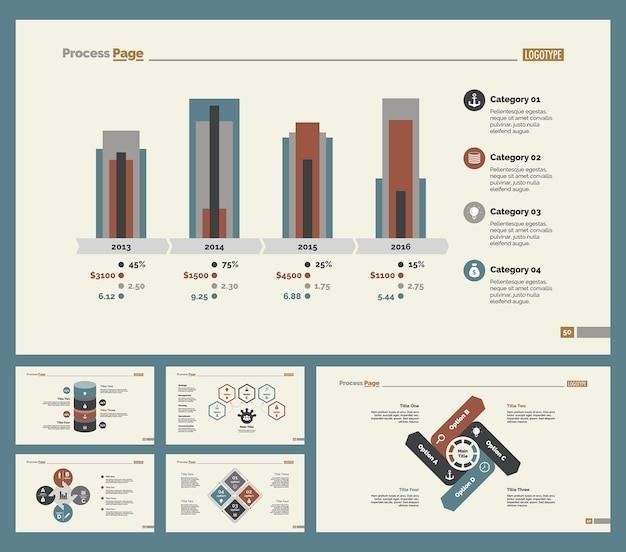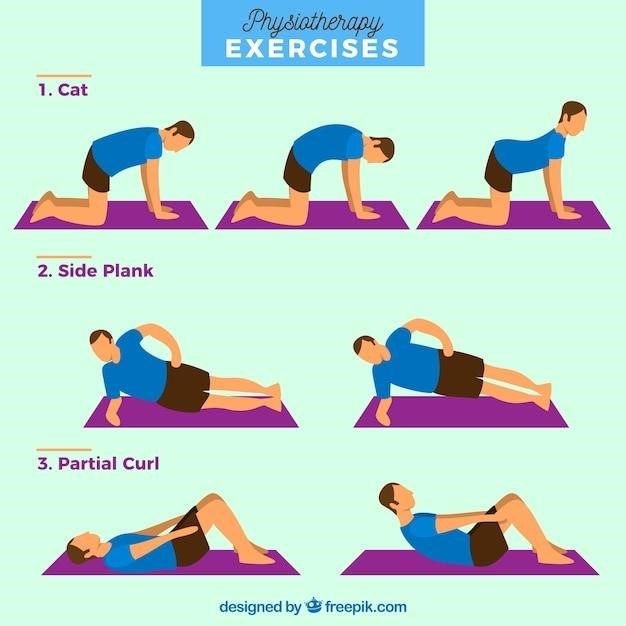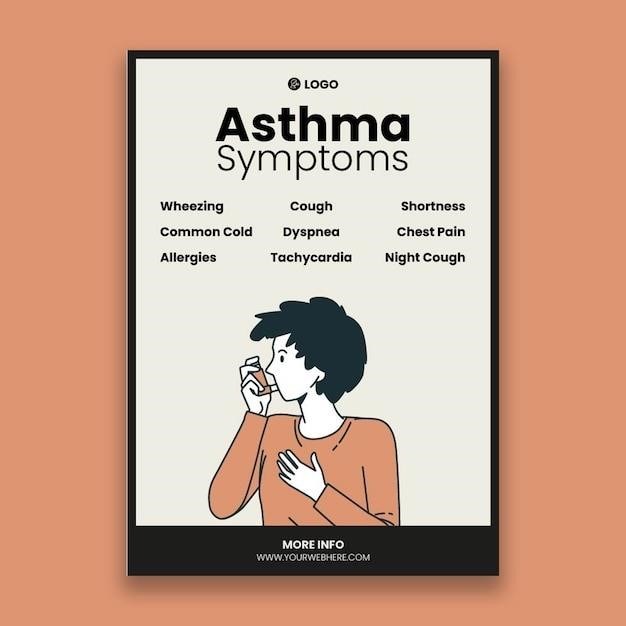Equivalent Pipe Lengths⁚ A Guide for Engineers
This page will give you a table of equivalent lengths for common fittings and valves․ This is especially useful for shortcut calculations during preliminary studies or troubleshooting․
Introduction
In the realm of fluid mechanics, the accurate prediction of pressure drop within piping systems is crucial for efficient design and operation․ One significant factor contributing to pressure loss is the presence of fittings and valves, which introduce localized resistance to fluid flow․ To account for these losses, engineers often employ the concept of equivalent pipe length․ This method effectively converts the resistance of fittings and valves into an equivalent length of straight pipe that would cause the same pressure drop․
Equivalent pipe length tables provide a convenient and widely used resource for estimating pressure losses in piping systems․ These tables typically list the equivalent lengths of various fittings and valves for different pipe sizes and flow conditions․ This information allows engineers to quickly and efficiently incorporate the impact of fittings and valves into their pressure drop calculations․
What is Equivalent Pipe Length?
Imagine fluid flowing through a straight pipe․ The flow encounters friction against the pipe walls, leading to a pressure drop along the pipe․ Now, consider a fitting, like an elbow or a valve, inserted into the pipe․ These fittings disrupt the smooth flow, creating additional resistance and causing a further pressure drop․ Equivalent pipe length is a clever way to represent this additional pressure loss caused by fittings․
In essence, equivalent pipe length is the length of straight pipe that would cause the same pressure drop as the fitting․ It’s like translating the complex resistance of a fitting into a simple, equivalent length of straight pipe․ By using equivalent pipe lengths, engineers can simplify pressure drop calculations and efficiently account for the influence of fittings in their designs․
Why Use Equivalent Pipe Length?
Equivalent pipe length offers a valuable tool for engineers in various situations․ First, it simplifies pressure drop calculations․ Instead of dealing with complex formulas for each fitting, engineers can simply add the equivalent length of each fitting to the actual pipe length, creating a “total developed length” (TDL)․ This TDL then allows for straightforward pressure drop calculations using standard equations․ This makes the design process faster and more efficient․
Secondly, equivalent pipe length facilitates preliminary studies and troubleshooting․ When quickly evaluating different piping configurations or diagnosing pressure drop issues, it provides a quick and easy way to estimate the impact of fittings․ Finally, equivalent pipe length is particularly useful when dealing with multiple fittings in a piping system․ By representing each fitting as a length of straight pipe, engineers can readily assess the cumulative effect of these fittings on the overall pressure drop․
Factors Affecting Equivalent Length
The equivalent length of a fitting is not a fixed value but is influenced by several factors․ Understanding these factors is crucial for accurate pressure drop calculations and ensuring the correct selection of fittings for your application․ Pipe size plays a significant role, with larger diameter pipes generally having lower equivalent lengths․ This is because larger pipes offer less resistance to flow․ The type of fitting also significantly impacts equivalent length․ Elbows, tees, and valves with sharp transitions create more turbulence and pressure loss, resulting in longer equivalent lengths compared to fittings with smoother transitions․
Flow rate is another important factor․ Higher flow rates result in increased turbulence and pressure losses, leading to longer equivalent lengths․ Fluid properties, such as viscosity, also influence equivalent length․ Viscous fluids, which resist flow more, will result in longer equivalent lengths compared to less viscous fluids․ To accurately determine the equivalent length of a fitting, engineers must consider all these factors and consult appropriate tables or software tools that provide data specific to the chosen pipe size, fitting type, flow rate, and fluid properties․
Pipe Size
The diameter of the pipe significantly influences the equivalent length of fittings․ Larger diameter pipes generally have lower equivalent lengths because they offer less resistance to fluid flow․ This is due to the reduced surface area in contact with the fluid, leading to less friction and pressure loss․ For instance, a 4-inch diameter pipe will typically have a lower equivalent length for a specific fitting compared to a 2-inch diameter pipe; This relationship is often depicted in tables or charts that provide equivalent lengths for various pipe sizes and fittings․ Engineers must carefully consider the pipe size when calculating pressure drop and selecting fittings to ensure accurate results and efficient system performance․
When working with different pipe sizes in a system, it’s essential to understand how equivalent lengths vary․ For example, if you have a section of 80 mm pipe and need to express its equivalent length in 100 mm pipe, you can use the formula⁚ Equivalent length as 100 mm pipe = 22․8 x (100/80)5 = 69․6 m․ This adjustment helps ensure accurate pressure drop calculations across the entire system, taking into account the varying flow characteristics of different pipe sizes․
Fitting Type
The type of fitting significantly impacts its equivalent length․ Elbows, tees, valves, and other fittings create varying degrees of resistance to fluid flow, affecting pressure drop․ For example, a 90-degree elbow typically has a higher equivalent length than a 45-degree elbow because it creates a sharper change in flow direction․ Likewise, a gate valve has a lower equivalent length when fully open compared to a globe valve, as it offers less resistance to fluid flow․ Similarly, the type of valve (e․g․, gate, globe, ball) significantly impacts its equivalent length․ Ball valves, known for their smooth flow path, often have shorter equivalent lengths compared to globe valves, which create more turbulence due to their design․ These variations highlight the importance of selecting fittings based on their intended use and the desired flow characteristics for optimal system performance․
Equivalent length tables and charts often categorize fittings based on their type and provide corresponding values for various pipe sizes․ Engineers use these resources to determine the appropriate equivalent length for each fitting in a system․ This information helps them accurately calculate pressure drop and design piping systems that meet performance requirements while minimizing energy losses․
Flow Rate
Flow rate, the volume of fluid passing through a pipe per unit time, significantly impacts the equivalent length of fittings․ Higher flow rates lead to increased turbulence and friction within the piping system, especially at fittings․ This increased friction translates to a higher pressure drop, effectively increasing the equivalent length of the fittings․ The relationship between flow rate and equivalent length is often nonlinear, meaning the increase in equivalent length is not proportional to the increase in flow rate․ As flow rate increases, the effect on equivalent length becomes more pronounced, especially in fittings with sharp changes in flow direction or constricted flow paths․ Understanding this relationship is crucial for accurate pressure drop calculations and ensures that the chosen piping system can handle the intended flow rate without excessive pressure loss․
Equivalent length tables and charts may provide data for specific flow rates or ranges․ However, it’s essential to note that these values are often based on average flow conditions․ For high-flow systems or systems with variable flow rates, it may be necessary to consider the specific flow conditions and adjust the equivalent lengths accordingly․ Software tools and simulation models can assist in these calculations, providing more accurate representations of the relationship between flow rate and equivalent length for complex piping systems․
Fluid Properties
The characteristics of the fluid flowing through the piping system have a considerable influence on the equivalent length of fittings․ Viscosity, density, and even the fluid’s compressibility play a role in determining the pressure drop across fittings․ Viscous fluids, like oil or syrup, experience higher friction at fittings compared to less viscous fluids, such as water․ This increased friction translates to a higher pressure drop, effectively increasing the equivalent length of the fitting․ Similarly, denser fluids, like heavy crude oil, will experience greater pressure loss than lighter fluids, like gasoline, due to their increased inertia․ The compressibility of the fluid also impacts pressure drop, particularly in high-pressure systems․ Compressible fluids, like gases, can undergo significant volume changes under pressure, leading to additional pressure losses at fittings․
Equivalent length tables and charts often assume a specific fluid, typically water at standard conditions․ When dealing with different fluids, it’s crucial to adjust the equivalent lengths accordingly․ This adjustment can be made using correction factors or by consulting specialized tables and charts that account for specific fluid properties․ Software tools and simulation models can also aid in this adjustment, providing more accurate representations of the impact of fluid properties on the equivalent length of fittings․ By considering the specific fluid properties and adjusting the equivalent lengths accordingly, engineers can ensure accurate pressure drop calculations and optimize the design of piping systems for different fluid applications․
Common Fittings and Their Equivalent Lengths
The equivalent length of various fittings is often presented in tables and charts for convenient reference․ These tables typically list common fittings, such as elbows, tees, valves, and reducers, along with their corresponding equivalent lengths in feet or meters of straight pipe․ The equivalent length values are usually provided for different pipe sizes and schedules, as well as for different flow conditions․ For instance, an elbow with a 90-degree bend might have an equivalent length of 30 feet for a 4-inch pipe, while a tee with a branch connection might have an equivalent length of 15 feet for the same pipe size․ The equivalent lengths for different fittings can vary significantly, depending on their geometry, size, and the flow regime․ It’s important to note that these tables usually represent typical values, and actual equivalent lengths can vary depending on specific fitting designs and manufacturing tolerances․
For more accurate calculations, consulting manufacturers’ data sheets or conducting flow simulations is recommended․ These resources can provide more precise equivalent lengths based on specific fitting configurations, flow rates, and fluid properties․ Understanding the equivalent lengths of common fittings is essential for accurately calculating pressure drop in piping systems and ensuring efficient and reliable fluid transport․ By utilizing equivalent length tables and other resources, engineers can optimize piping system designs, minimize pressure losses, and ensure optimal performance for various fluid applications․
Elbows
Elbows are common pipe fittings that change the direction of fluid flow․ They come in various angles, with 90-degree elbows being the most prevalent․ Elbows introduce resistance to flow due to the change in direction, resulting in pressure drop․ The equivalent length of an elbow is a measure of the additional length of straight pipe that would cause the same pressure drop as the elbow․ Equivalent lengths for elbows vary depending on the elbow’s angle, radius, and pipe size․ For example, a 90-degree elbow with a short radius will have a longer equivalent length than a 90-degree elbow with a long radius, for the same pipe size․ This is because a shorter radius elbow creates a more abrupt change in flow direction, leading to greater pressure loss․
Tables listing equivalent lengths for elbows often provide values for different pipe sizes, elbow angles, and radius types․ Engineers can use these tables to estimate the pressure drop caused by elbows in a piping system․ This information is crucial for designing efficient piping systems that minimize pressure losses and ensure optimal fluid flow․ Understanding the equivalent lengths of elbows is particularly important for applications where pressure drop needs to be carefully controlled, such as in high-pressure systems or systems with long pipe runs․ By considering the equivalent lengths of elbows, engineers can optimize piping designs and achieve efficient and reliable fluid transport․
Tees
Tees are another crucial type of pipe fitting, serving as a branching point in a piping system, allowing fluid to flow in multiple directions․ Similar to elbows, tees introduce resistance to flow, leading to pressure drop․ This pressure drop arises from the change in flow direction and the disruption of the flow pattern within the tee․ The equivalent length of a tee represents the length of straight pipe that would cause the same pressure drop as the tee․ The equivalent length of a tee depends on various factors, including the tee’s type, size, and the flow direction․
For instance, a tee with a flow path through the run (straight through) will have a shorter equivalent length compared to a tee with a flow path through the branch (branch flow)․ This difference arises because the straight-through flow experiences less disruption compared to the branch flow, which involves a more significant change in direction․ Equivalent length tables for tees usually provide values for different pipe sizes, tee types (branch flow, straight flow), and flow directions․ Engineers utilize these tables to estimate the pressure drop caused by tees in a piping system, which is essential for designing efficient and reliable piping networks․

Valves
Valves play a crucial role in controlling and regulating fluid flow within piping systems․ They act as flow interrupters, allowing for the start, stop, and regulation of fluid movement․ While valves are essential for operational control, they also introduce resistance to flow, resulting in pressure drop․ The equivalent length of a valve represents the length of straight pipe that would cause the same pressure drop as the valve․ The equivalent length of a valve is influenced by several factors, including the valve’s type, size, and the degree of opening․
For example, a fully open gate valve will have a shorter equivalent length compared to a partially open globe valve․ This difference arises because the gate valve offers less resistance to flow due to its straight-through design, while the globe valve creates greater flow restriction with its more intricate internal design․ Equivalent length tables for valves typically provide values for various valve types, sizes, and degrees of opening․ These tables enable engineers to estimate the pressure drop caused by valves within a piping system, facilitating the accurate design of efficient and reliable fluid transport networks․
Using Equivalent Length Tables
Equivalent length tables are invaluable resources for engineers and designers working with piping systems․ These tables streamline the process of calculating pressure drop, a critical factor in ensuring efficient and reliable fluid flow․ The tables typically present equivalent lengths for common fittings and valves, categorized by type, size, and degree of opening․ To use the tables, engineers first identify the fittings and valves within their piping system․ Then, they locate the corresponding equivalent lengths in the table based on the fitting’s or valve’s type, size, and degree of opening․
The equivalent lengths are expressed in units of straight pipe length․ By summing the equivalent lengths of all fittings and valves within a piping run and adding this value to the actual length of the straight pipe, engineers obtain a total equivalent length․ This total equivalent length represents the overall resistance to flow within the piping system․ With this information, engineers can accurately predict pressure drop and design the system to meet specific flow requirements, optimizing energy efficiency and system performance․


















